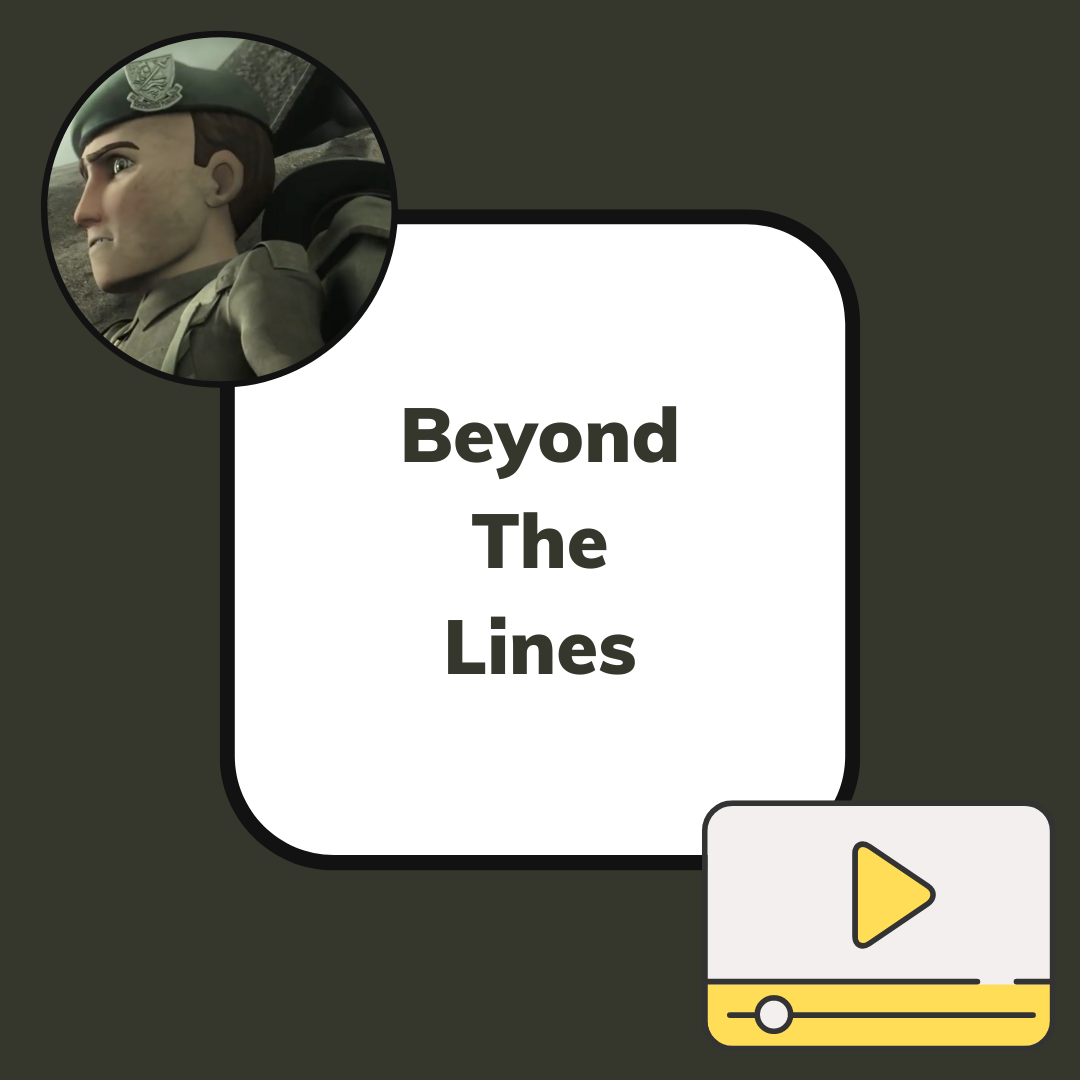The opening sequence of this film swoops across an old map, and students studying World War II may recognise the names of the Normandy landing beaches.
We are transported to this setting. First, we see the fearful eye of a soldier, then a group of soldiers huddled in transport vessels, ready for battle. Once discharged, they charge up the beach – but something feels unusual.
Two young boys are caught up in the chaos, surrounded by pale, paper-faced soldiers. As the scene progresses, subtle clues suggest that this is not a real battle but an imagined or symbolic one. The setting is filled with objects that don’t quite belong:
- Paper soldiers
- Gramophone
- Child’s tricycle
- Toy truck
- Television
- Playing cards
- Garden furniture
- Suitcase
Despite these oddities, the battle feels very real to the boys. In the crowd of faceless soldiers, one familiar face stands out – someone they recognise. They run to him and take cover, witnessing the horrors of war up close.
Papers flutter around the fallen soldiers – possibly letters to loved ones. The imagery is haunting. A protective figure sweeps across the boys, and the screen fades to black.
We then see the boys are safe, in their attic with their grandfather. They had been reading old letters alone, sparking their vivid experience.
Ideas for Interpretation
- The letters may have belonged to their grandfather, revealing what he saw during the war.
- As a quartermaster, perhaps he was left in charge of soldiers’ letters while they went off to battle – letters that were never reclaimed. The paper soldiers may symbolise those who never returned.
Visit Literacy Shed Plus (subscription required)







